Introduction
Who were the 38 who were killed during the Chicago Race Riot of 1919? Here you can read about these individuals before they fell victim to the violence of Chicago’s Red Summer, and also learn about the neighborhoods where people lost their lives. Expand the individual sections to read the biographies of persons included in our first phase of commemoration (please note: parts of this page are still under construction). For a full narrative of the riot visit The History page, and to learn about the proposed locations of the CRR19 commemorative markers view our interactive map.
"The Vortex of Violence" / The Angelus Riot

On the evening of Monday, July 28, 1919, rumors spread that a white tenant of the Angelus apartment building, located at 35th Street and Wabash Avenue, had shot a Black child. A crowd of several hundred Black Chicagoans gathered outside the building and over 100 policemen rushed to the scene. After the riots, the Chicago Commission Report described the police as searching the building for a shooter, finding no one, when a policeman was hit by a brick. Newspapers reported conflicting accounts, including that bricks were thrown or a shot was fired by building tenants, members of the crowd, or the police themselves. The police began firing into the crowd. Five men were killed. Four of them were Black.
Expand to Read the Biographies Joseph Sanford, a Black man, was murdered by police during the so-called “Angelus Riot.” Born in Tennessee around 1882, Sanford married Mary Williams in Shelby County, Tennessee, on May 26, 1901. Read more John Walter Humphrey was born in Alabama in 1898 and worked as a laborer at the Union Stock Yards. He lived at 3244 S. Federal St. with his brother, Edward. Read more Hymes Taylor was murdered during the clash at the Angelus apartment building on July 28th. A Black man born in 1881, Taylor lived at 206 E. 37th Street in Chicago at the time of his death. Read more Edward Lee was born in Chicago in 1871, and lived at 3436 S. Calumet Avenue with his brother, Attrus. Lee also worked at the Union Stock Yards at the time of the riot. Read more William J. Otterson was a white man born on the Isle of Man in Ireland in 1885. He immigrated to the United States in 1904 and worked as a plasterer in Chicago. Read more Bronzeville is a neighborhood on the South Side of Chicago, stretching from 31st to 51st Streets between State Street and Cottage Grove. A historic and contemporary center of Black life and culture, the neighborhood was known as “The Black Metropolis,” home to celebrated business and community institutions and the residence of several prominent Black artists and intellectuals. Bronzeville was one of the few neighborhoods open to Black Chicagoans under racially restricted housing, in an area referred to as the “Black Belt.” A target of white racist violence and policing during the riots, as well as a center of Black resistance, Bronzeville was home to many of the killed and the location of several deaths. Expand to Read the Biographies Theodore Copling was a Black man born in Pennsylvania in 1901. In Chicago, Copling lived at 2933 S. State Street with his father and worked in a barber shop as a porter. On July 30, 1919, Copling was part of a crowd of bystanders outside of a store on 2930 S. State Street. Read more Samuel Banks was a young Black man born in 1903. Banks lived at 700 W. 43rd Street in Chicago and worked as a laborer at the Union Stock Yards. On July 30, 1919, Banks was confronted on Dearborn Street by three white policemen and a dozen Black ex-soldiers. Read more Eugene Temple, a white man, was born on December 28th, 1887 in Chicago. Temple lived at 3415 N. Clark Street, in the Lake View neighborhood and owned Columbia Laundry at 3642 S. State Street. He married his wife, Grace, on June 7th, 1907. Read more Casmere Lazzeroni, a white man, was born in 1854 in Italy. He migrated to the United States in 1909, with his wife Carmela, landing in New York aboard the La Provence. Passenger records reveal Lazzeroni’s previous residence was Lucen, Italy, and that he intended to move to Chicago upon arrival. Read more Stefan Horvath, a white man, was born in 1891 in Hungary to John Horvath and Clara Capo. Cook County records indicate that, in 1913, Horvath married Mary Liber from Kiral, Hungary, in Aurora, Illinois, an industrial suburb of Chicago. US military records indicate that a “Stephen Horvath,” also born in 1891, was drafted into the US Army during the First World War. Read more Henry Baker, an African American, was born around 1886, possibly in Mississippi, according to Cook County Records. It is not clear when he moved to Chicago but, once there, Baker lived at 544 E. 47th Street, and he worked as a laborer. On the second day of the riots, July 28th, Baker was at home when he was shot through the window of his house. Read more Flemming was born in Chicago on February 7, 1900. He lived at 4920 N. Lawrence Avenue with his father, John Fleming, originally from Louisiana, and his mother Agnes, an Irish immigrant. Flemming worked as a clerk. At the time of the riots, on August 5, Flemming and a group of other boys were walking at 47th St. and Forrestville Avenue when ordered to halt and move away by a police officer. Read more B.F. Hardy, an African American man, was born around 1859. He lived at 3136 S. Ellis Avenue in Chicago with his wife, Armenta Johnson, whom he married in 1898.[1] Possible siblings of Hardy include Joseph and Thomas Hardy. Read more Ira Henry, an African American, was born in 1877 in Mississippi. Never married, in Chicago Henry lived at 6017 S. Dearborn Avenue. He worked as a laborer. During the riots, on July 30th, Henry was involved in an altercation with Chicago Police officers. Read more David Marcus, a Jewish immigrant, was born around 1869 in Poland. After immigrating to Chicago, he lived at 509 E. 37th Street, i.e. in the “Black Belt.” In Chicago, he worked as a shoemaker. According to descendants, his two daughters and wife still were in Poland waiting for him to send money, so they could travel and join him in Chicago Possible local relatives included Nathan Mar… Read more Clarence Metz, a white man, was born in 1902 in Chicago. His father, Herman Metz, was born in Georgia, and his mother, Rose, was born in Illinois. Metz had two sisters, Rosetta and Marion, and one brother, Morris. In Chicago, Metz and his family lived at 5201 N. Ingleside Avenue. At the time of the riots, Metz was unemployed and lived with his parents and siblings. During the riots, the Chi… Read more John Simpson, an African American, was born in 1889 in Kentucky. After working as a railroad cook, Simpson moved to Chicago, ultimately living at 3910 S. Calumet Avenue. In Chicago, he found a job as a police officer and worked out of the Wabash Avenue police station. Simpson served in World War One, as a member of the 365th infantry, and was discharged on March 18th, 1919. After… Read more George Wilkins, a white man, was born in Kentucky in 1875. He lived in Louisville, Kentucky and worked as an insurance agent for the Metropolitan Life Insurance Company. However, a Chicago Tribune article listed his address as 5010 S. Calumet Avenue, perhaps signifying that Wilkins was staying and perhaps living for an extended period in Chicago. During the riots, on July 30th, Wilkins was making his rounds when confronted… Read more As news of the riot’s events and rumors spread across the city, the nexus of violence expanded beyond the city’s Black Belt including northward into the Loop. The morning of July 29, a mob of around 200 white people gathered in Chicago’s downtown area. The majority of the group were young, white soldiers and sailors. The mob proceeded through the Loop, sometimes splintering into smaller groups, targeting all Black Chicagoans in their path whom they beat, robbed, and killed indiscriminately. Police did nothing to stop this white supremacist mob and city leadership declined to call in state militia to quell the bloodshed. Expand to Read the Biographies Paul Hardwick was a Black man born in Georgia in 1868. After moving to Chicago, he worked as a waiter at the legendary Palmer House hotel. At the time of the riots, he lived with his wife Laura at 6730 S. Langley Avenue. Read more Robert Williams was a Black man born in Jackson, Mississippi in 1878. He migrated to Chicago, where he lived at 1532 W. Jackson Boulevard on the Near West Side and worked as a janitor. Read more Harold Brignadello, a white man, was born in 1884 in Chicago. After marrying, Brignadello moved to Rock Island, Illinois, where he lived with his wife and worked as a laborer at the Rock Island Arsenal. Read More Back of the Yards was the name for the neighborhood situated just south and west of Chicago’s Union Stock Yards, stretching from 39th to 55th Streets between Halsted and the railroad tracks. The neighborhood was heavily populated in the early twentieth century by first- and second-generation European immigrants. In the years before the Riot, Back of the Yards became associated with Irish athletic clubs and youth groups known for gang activity and racial antagonism near the Black Belt. The Chicago Commission held these groups responsible for much of the violence during the Riot itself. Expand to Read the Biographies Joseph Schoff, a white man, was killed after a racist encounter with a man named Jose Blanco. At the time of the riots, 33-year-old Schoff lived at 2519 W. 47th Street and worked as a millwright. Read more John Jeans Edward Mills, a Black man, was born in Illinois on October 23rd, 1885. According to his draft card, in 1918 Mills lived with his wife, Pearl, at 4714 S. Evans Avenue in the so-called “Black Belt.” Read more Oscar Dozier, a Black man, was born in 1884. While few details about his age, place of birth, or early life exist, he likely was one of the tens of thousands of African Americans who moved to Chicago from the “Jim Crow” South during the Great Migration. Read more Henry Goodman, a Black man, was born in Alabama in 1883. Scant details about his life before he moved to Chicago exist, but records indicate that his father lived in Alabama, as well. Read more Louis Taylor, a Black man, was born in Maryland in 1864. His mother and father were also born in Maryland. It is possible, given Taylor’s birth year and location, that he was born a slave. While it is uncertain when Taylor left Maryland, records indicate that he married Augusta Sonweid in 1901 in Chicago. Read more William Dozier was born in 1872 in Georgia. During the time of the Chicago Race Riot, he lived at 2433 S. Leland Avenue. Dozier worked as a laborer in the Union Stock Yards on Exchange Avenue in Bridgeport. During the riots, Dozier was at work discussing protections for Negro employees with a superintendent when, most ironically, he was assaulted with a hammer by a white man standing nearby. Read more Scant records exist for Edward Jackson. Born in Virginia around 1877, Jackson, an African American, worked as a laborer in Chicago. He lived at 3352 S. Forrest Avenue while in Chicago. During the riots, the Chicago Commission on Race Relations report states, “Jackson had started to walk to work” when “at Fortieth and Halsted Streets he was attacked by four or five white men and beaten. Read more Nicholas Kleinmark, instead of being a victim of the riots, met his demise by participating in them. Kleinmark, a white man, was born on April 14th, 1900, in Chicago. His parents, Kodo and Sadie Kleinmark, immigrated from Holland. During the First World War, Kleinmark was drafted into the US Army, serving in 1917-18. After Kleinmark’s military service, and perhaps before, he lived with his fa… Read more Joseph Powers, a white man, was born in 1890 in Ireland. After immigrating to the United States, he settled in Chicago where he lived at 3791 S. Archer Avenue with his brother, J.J. Powers. While in Chicago, Powers worked as a streetcar conductor.[1] At the time of the riots, on July 29, Powers was with another man on Root Street, walking east, when they came across a group of Black men including… Read more During the riots, a streetcar strike forced many Black Chicagoans to seek alternate transportation home. Because racist housing policies, intimidation, and violence confined Black residents to a narrow section of the city, these alternate routes required passage through hostile white neighborhoods. The Near West Side was home to a neighborhood of Italian immigrants agitated by a false rumor that an Italian girl had been shot by a Black employee of a nearby factory. Following a similar pattern to violence in other neighborhoods, a mob formed in response to the rumors. The mob pursued and murdered Joseph Lovings, a Black porter traveling through the neighborhood on his way home from work. Expand to Read the Biographies Joseph Lovings, a Black man, was born on December 28th, 1876 in Kentucky. A WWI veteran, Lovings drafted in the US Army in 1917 and served until 1918. In Chicago, he lived with his wife Carrie at 2032 S. Dearborn Street. Lovings worked as a porter. Read more Samuel Bass, an African American, was born around 1862 in Michigan. He was married to Lillian Bass, born in Guthrie, Kentucky in 1864, according to her Cook County death certificate Read more In their renowed study of race & urban life, Black Metropolis: A Study of Negro Life in a Northern City , St. Clair Drake and Horace R. Cayton chronicle the Southern growth of the Black Belt in the 30s into the Washington Park Community Area. Overcrowding had become rampant in the communities north of Washington Park, and new apartments were being built in the area to accomodate the ongoing influx of Black residents. By 1930, the neighborhood was 92% Black. Expand to Read the Biographies Thomas Joshua, an African American, was born on September 5, 1900, in Mobile, Alabama. His parents, Wen and Anna, were also from Mobile. Most likely, they migrated to Chicago as part of the Great Migration though when is unknown; Joshua lived at 5236 S. State Street with his parents. While in Chicago, Joshua worked at the Union Stock Yards, located on Exchange Avenue… Read more Walter Parejko, a white man, was born in 1880 in Poland. After immigrating to the United States, Parejko settled in Chicago where he lived at 9250 S. Calumet Avenue with his wife Anna, also from Poland, and their children: Gertrude, Joseph, and Peter. In Chicago, Parejko worked as a carpenter for the Grand Trunk Railway, a railroad line that ran from Michigan through Chicago and throughout… Read more Morris Perel, a white man, was born in 1864 in Russ, Poland. After immigrating to Chicago and the death of his wife, Rachel, Perel lived at 5209 S. Indiana Avenue with his seven children–Charles, Harry, Bernard, Bertha, Phyllis, Eleanor, and Rose. In Chicago, Perel worked as a shoe merchant. During the riots, Perel was attacked by the same group that, just a few hours before… Read more Berger Odman, a white man, was born in 1898 in Chicago. His father, Gust, and his mother, Augusta, were both Swedish immigrants. Odman had four siblings: one sister, Ethel, and three brothers, Carl, Gunnar, and Harold. Odman registered for the draft and would have been of age to fight. However, verification of his military service/status could no… Read more In 1919, an informal line of segregation divided 29th Street Beach, with whites on one side and African Americans restricted to swimming on the other. Due to changes in the Lake Michigan’s shoreline, identifying exactly where the events that set the race riots in motion took place is a difficult task. It is possible, however to find maps illustrating where the 1919 shoreline was, a few hundred feet west of where it is today. When you walk along the lake today—south of McCormick Place and north of 31st Beach—look over toward Lake Shore Drive. Imagine that the shoreline was over on the other side of the road. The spot where you’re walking was part of Lake Michigan back then. Expand to Read the Biographies Eugene Williams, whose death sparked the deadly riots, originally was from Georgia, born March 10, 1902. In his article “Searching for Eugene Williams,” Robert Loerzel details his exhaustive search for Williams’s origins and his life leading up to his death. His parents, John and Luella Williams, moved to Chicago from Georgia sometime in 1908 or 1909, before the Great Migration “formally” launched during World War I. Both Williams and his father worked… Read more
Joseph Sanford

John Walter Humphrey

Hymes Taylor

Edward Lee
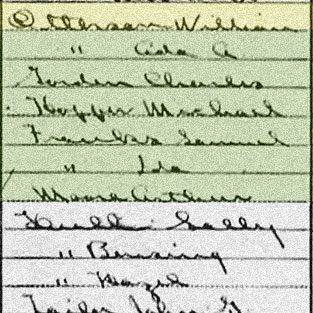
William Otterson
Bronzeville / 'The Black Metropolis'
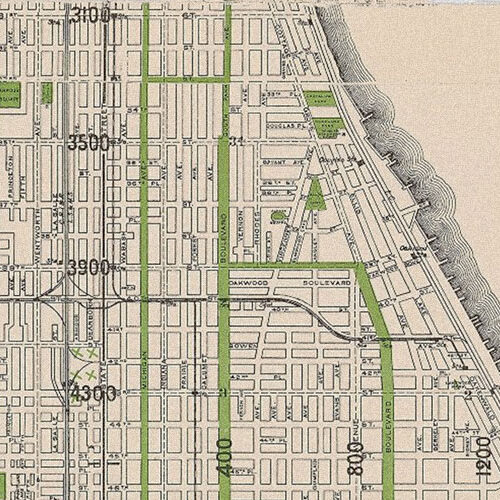

Theodore Copling

Samuel Banks
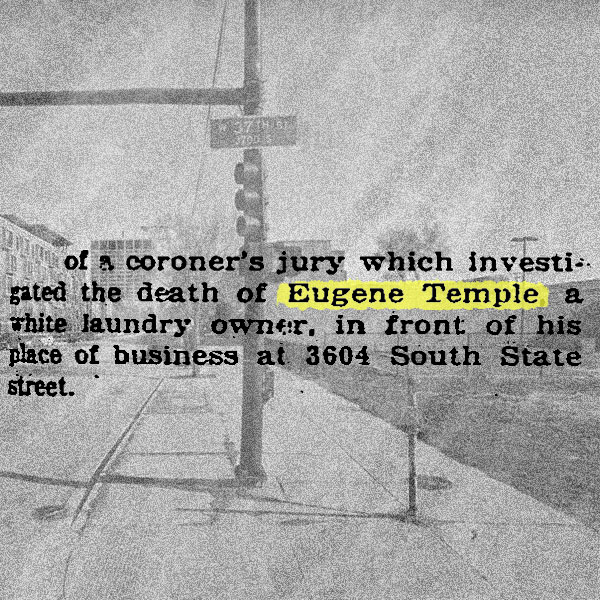
Eugene Temple

Casmere Lazzerroni
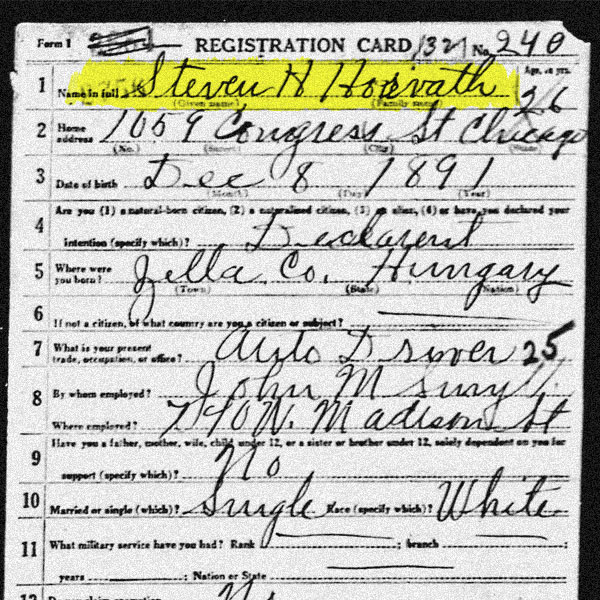
Stefan Horvath
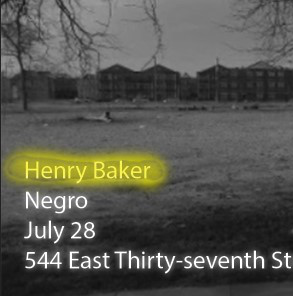
Henry Baker
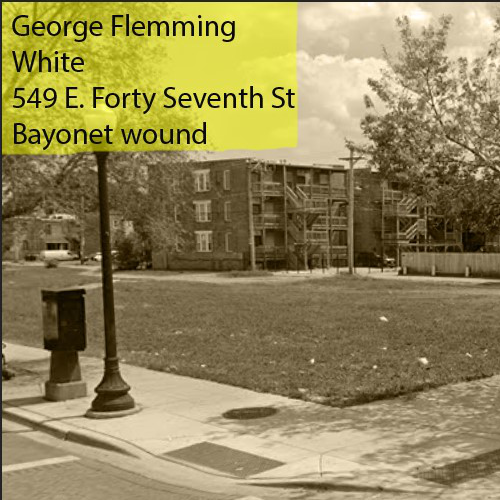
George Flemming

B.F. Hardy
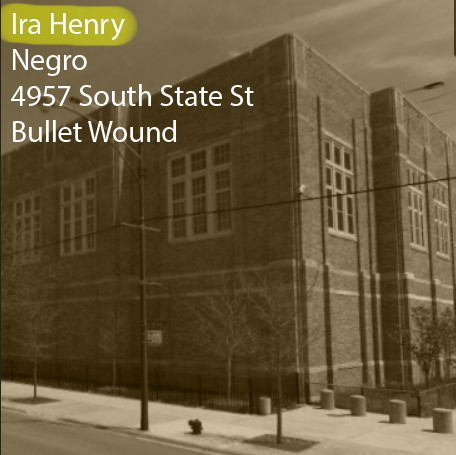
Ira Henry

David Marcus

Clarence Metz
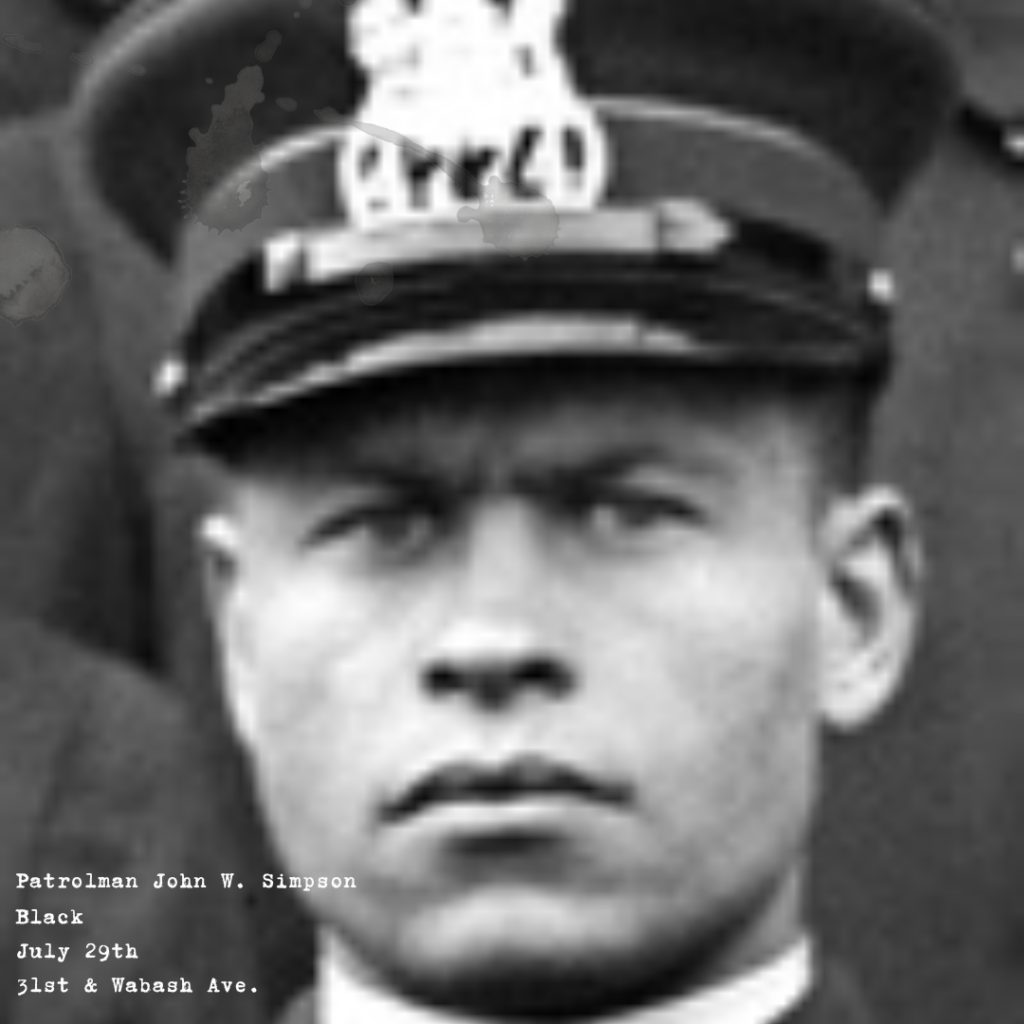
John Simpson
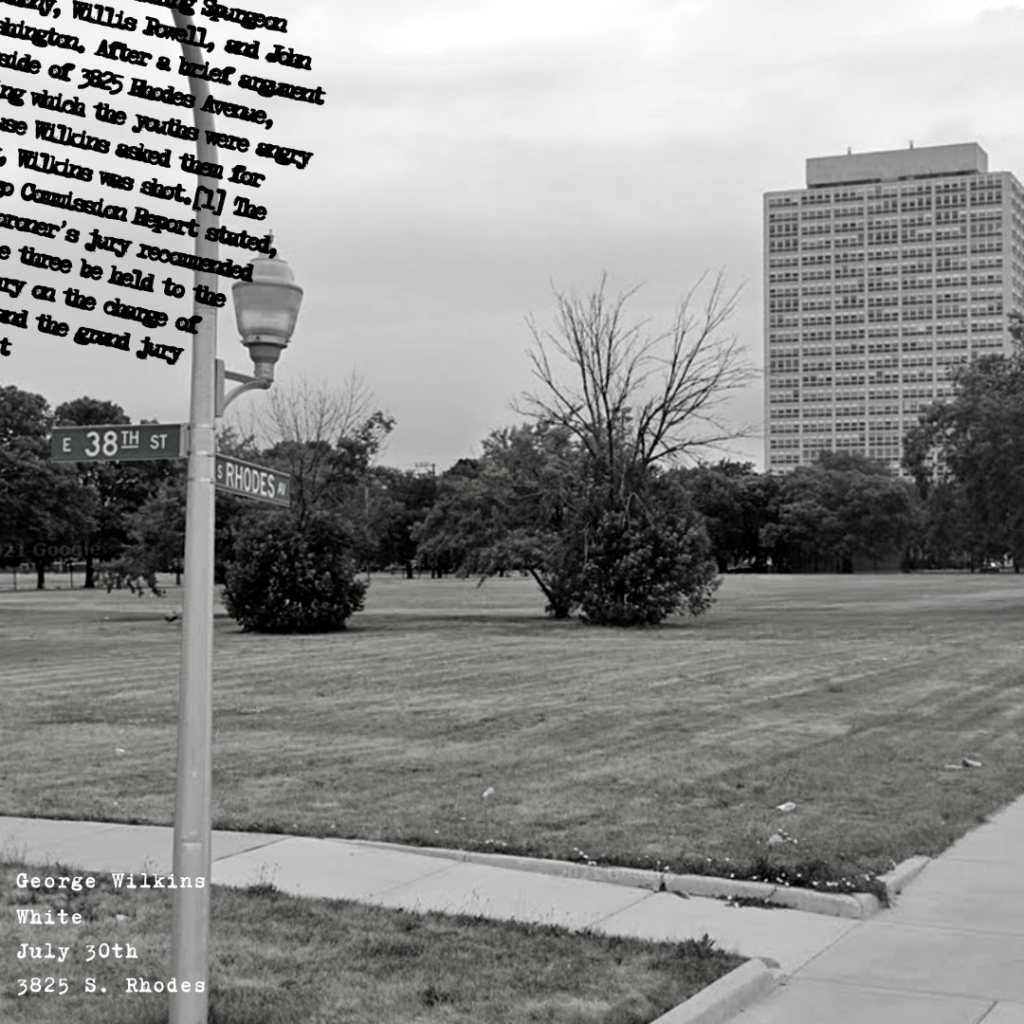
George Wilkins
The Loop


Paul Hardwick

Robert Williams
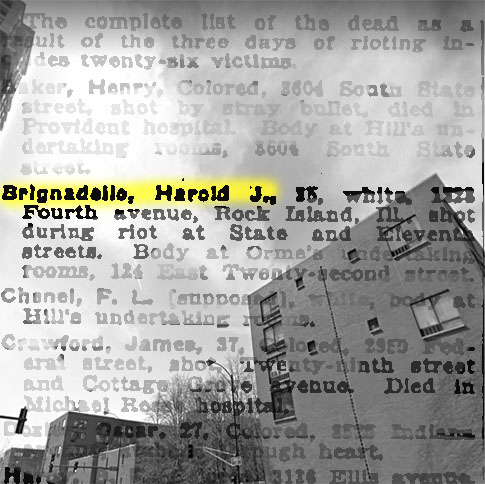
Harold Brignadello
Back of the Yards
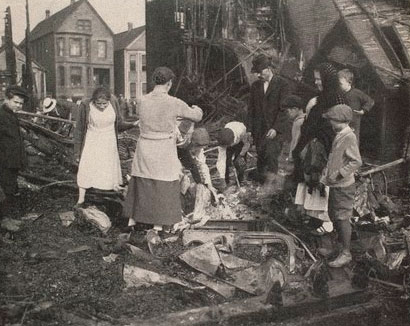
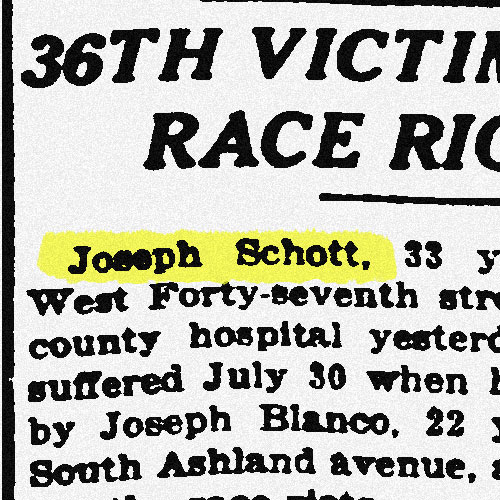
Joseph Schoff
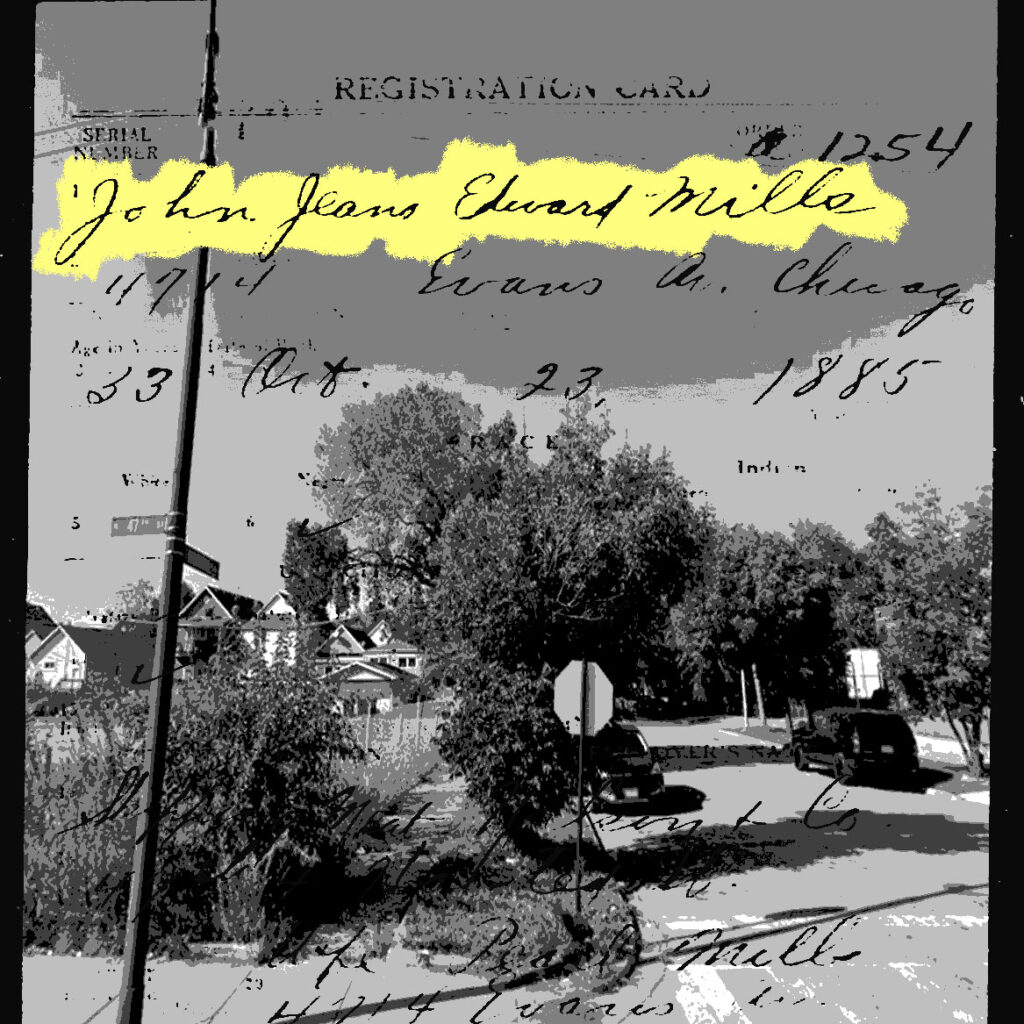
John Mills
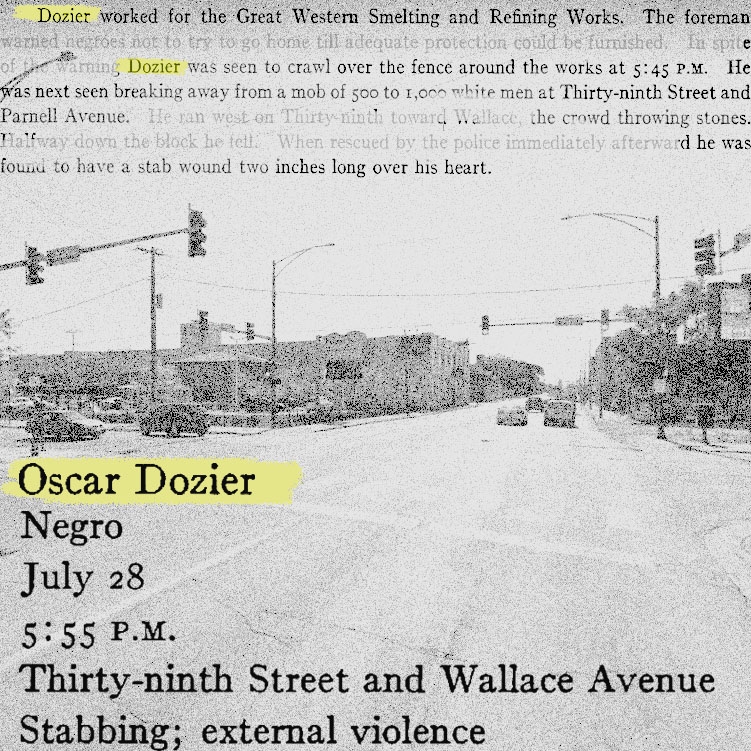
Oscar Dozier
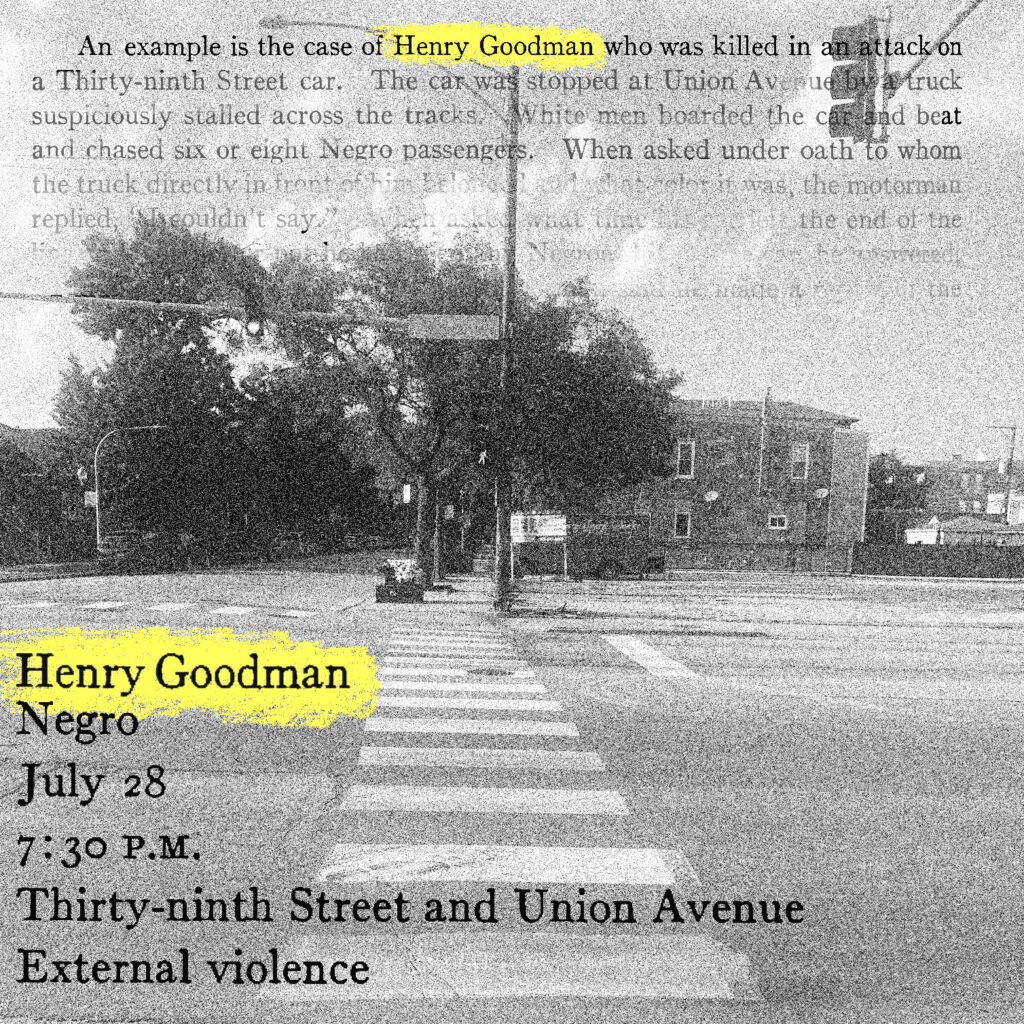
Henry Goodman
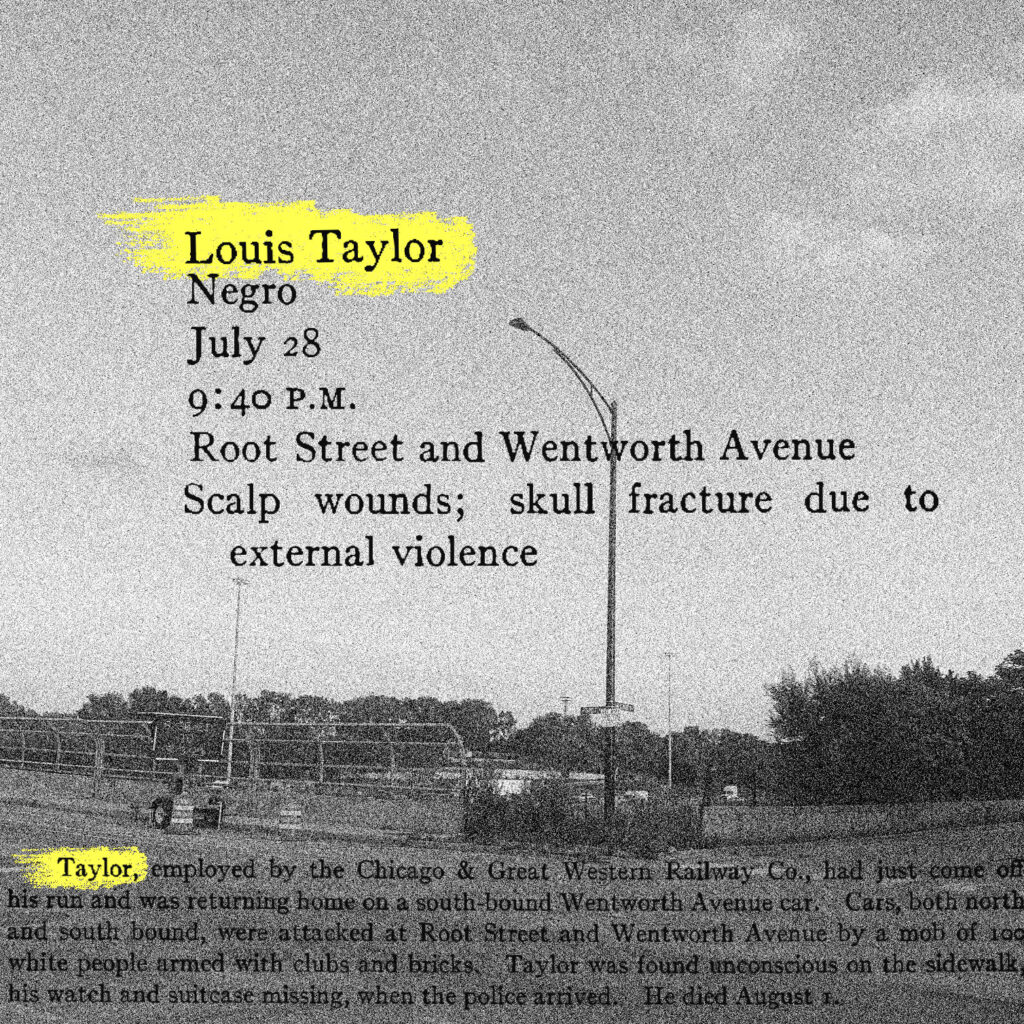
Louis Taylor

William Dozier

Edward Jackson

Nicholas Kleinmark

Joseph Powers
Near West Side
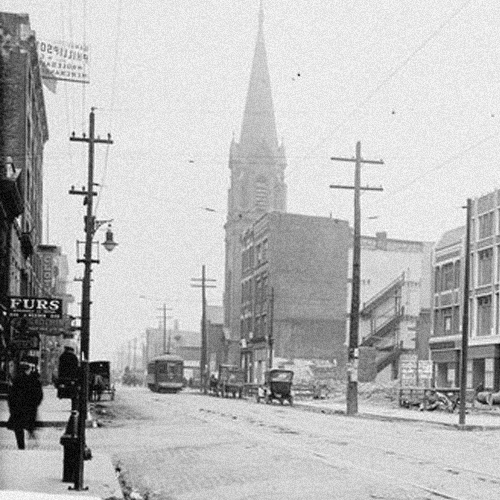

Joseph Lovings
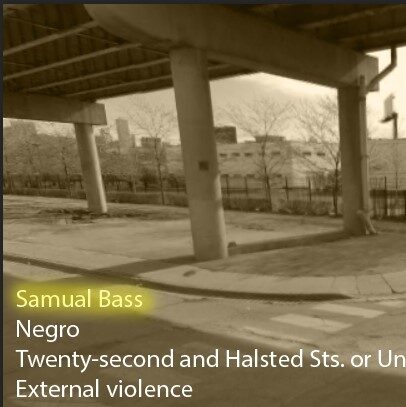
Samuel Bass
Washington Park / Woodlawn
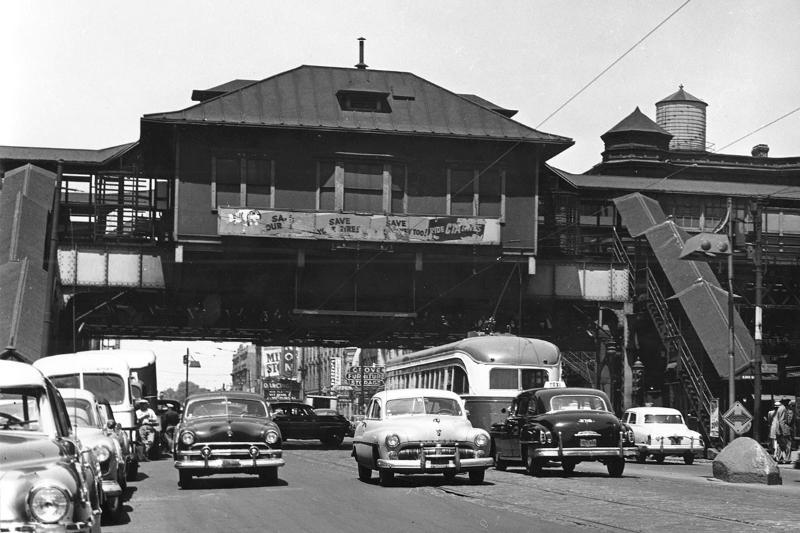
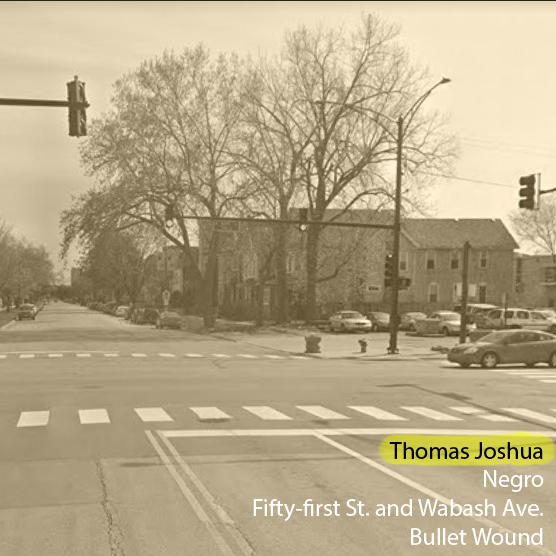
Thomas Joshua

Water Parejko
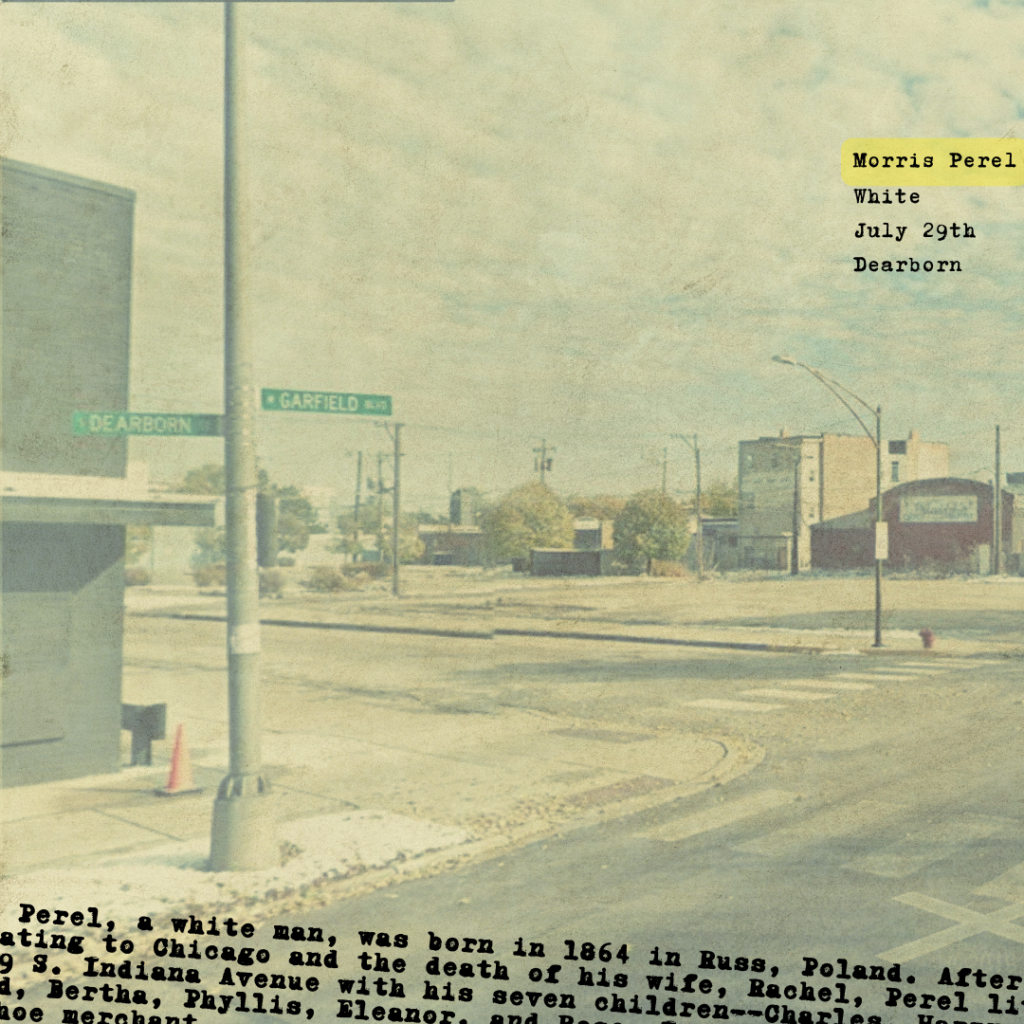
Morris Perel
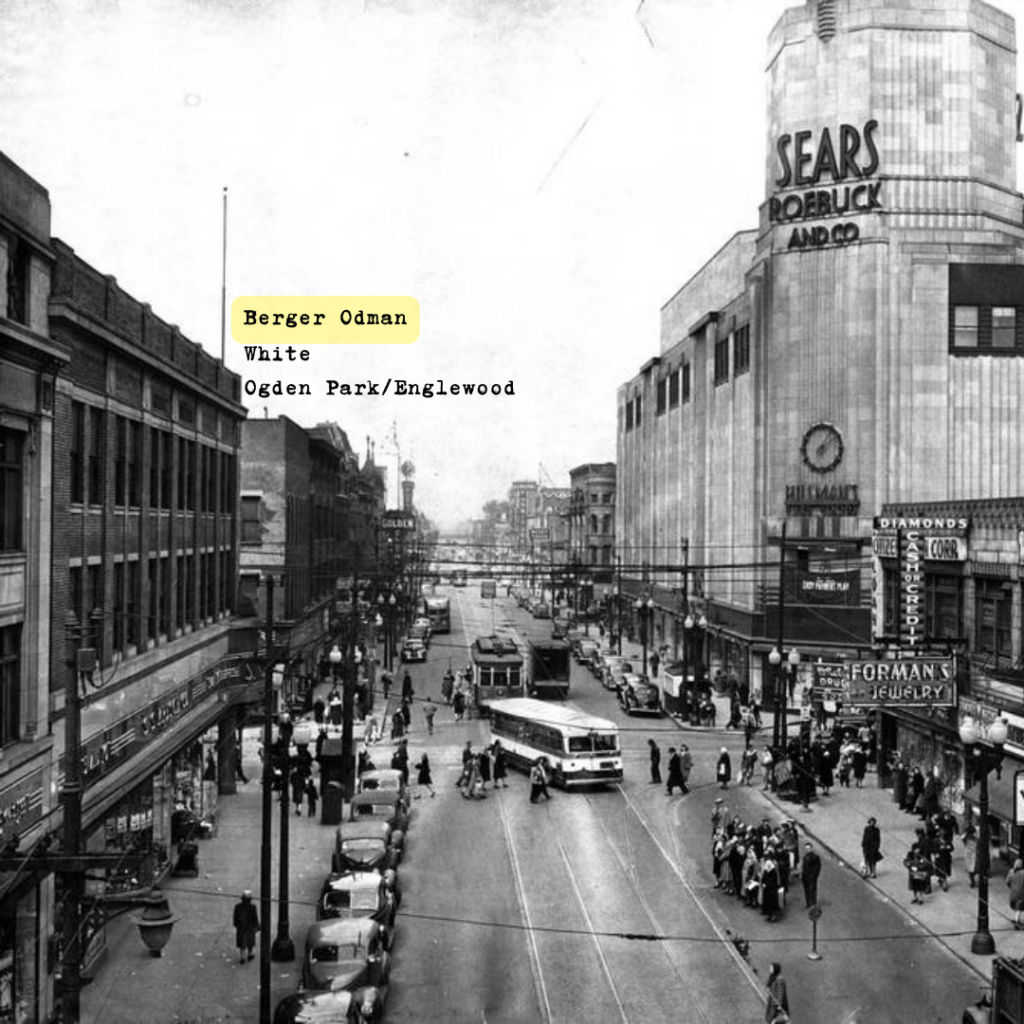
Berger Odman
Lake Front
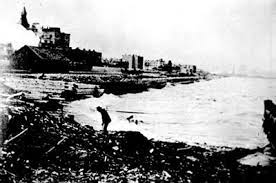
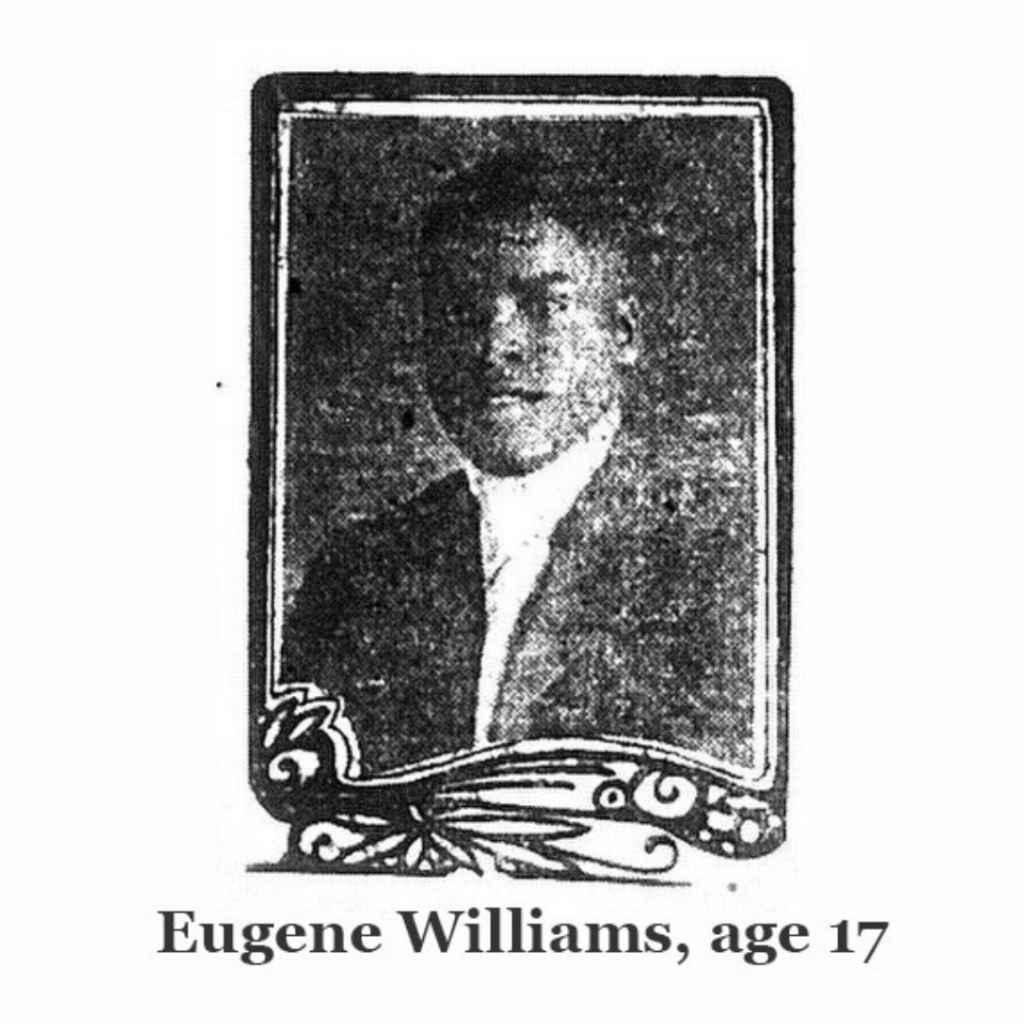
Eugene Williams